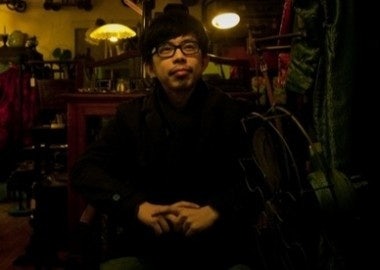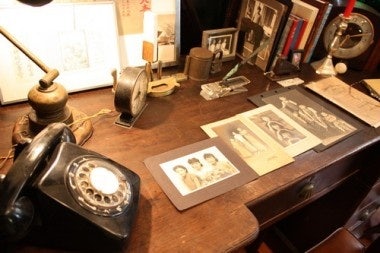Shanghai's Bai Sher, Heizi Go Beyond "Fu Gu" Retro And Create New Designs With Old Materials#

Yesterday, Jing Daily looked at Shanghai's role as a "muse" for many international luxury brands, and the transformative effect that the city is having on their long-term China strategy. Although the city is developing (or rather, nurturing) a reputation as China's luxury epicenter, an interesting trend we've been watching is the emergence of more -- and more confident -- home-grown designers and boutiques in Shanghai. These designers, inspired by vintage or retro Chinese fashion or the handicrafts of the country's 55 minority groups, are creating unique items that reflect both China's deep history as well as its current dynamism.
Recently, we profiled one of these Shanghai-based designers, who goes by the nickname "Heizi" (black guy). Heizi's jewelry designs, which are inspired by the traditional designs of Chinese ethnic minorities and assembled mainly from pieces Heizi has collected in his travels, are catching on among some of Shanghai's more adventurous "accessorizers." As we wrote at that time, while ethnic-influenced fashion and jewelry might remain very much a niche market in luxury-obsessed China, in China’s increasingly picky and sophisticated first-tier cities like Shanghai, it is highly probable that younger or more experimental fashion lovers might become more interested in styles that call back to China’s remote countryside in coming years.
This week, CNNGo talked to another young Shanghai designer, Xiao Xiao, who is finding inspiration in his hometown's cosmopolitan past. Luckily for his fans, Xiao Xiao's designs, whether inspired by or assembled from vintage items, are far more exclusive yet affordable than those sold in Shanghai's luxury boutiques. From the article:
Xiao Fan, wearing a pair of thick-rimmed glasses, loose Japanese-style cardigan, dark wool coat and carrying his laptop in a 1930s vintage leather briefcase, is slightly odd at first sight to say the least. His eccentric dress code however betrays his passion -- Shanghai vintage.
A Shanghai native, Xiao Xiao, as he prefers to be called, runs a store called Bai Sher (摆设) dedicated to bringing new life to his Shanghai vintage finds.
Stepping into Xiao Xiao's store on the border of Shanghai’s French Concession and Jing’an District, is like stepping back into old Shanghai, or at least bits and pieces of it. Looking around you see oak cabinets from the 1930s and wooden doors with stained glass windows hunkering alongside bronze ornaments, an assortment of lamps and glassware and Seagull radios from the 1950s. The vintage clutter goes on and on. In the room with dim orange light and the damp smell of old Shanghai, Billie Holiday plays in the background.
“I love fashion,” says Xiao Xiao sitting in a chair with a couple of qipaos hanging next to him. “The next thing I'd like to do is to make fashion. I'm thinking about using vintage leather to make bags and gloves.” As a reader of High Fashion magazine, Xiao says one of his biggest dreams is to have his own designer clothing shop.

As the article concludes, young independent designers like Xiao Xiao have their work cut out for them. Currently, with most younger Chinese still in something of a "honeymoon" period in regards to imported luxury and fashion, vintage or vintage-inspired fashion will likely remain a niche populated mostly by the avant-garde (or expats) for the time being. However, this could change sooner than many might think, and already is starting to change -- as street fashion observers like Stylites in Beijing or Jiepai (Chinese) regularly document.
As for Xiao Xiao, it seems his main focus at the moment is to inspire other young designers to branch out and try new things, in the hopes of building a stronger platform for collaboration:
“I definitively hope what I do will inspire people,” says Xiao Xiao standing in front of a Russian bicycle from WWI. “Bai Sher is meant to be a platform for people with similar minds to share their passions and ideas. It's a creative space and I hope it can inspire young people to be more imaginative, and reuse the old to make new.”
Bai Sher (摆设)#
866 Yan'an Zhong Lu, near Shaanxi Bei Lu, Shanghai.
延安中路866号, 近陕西北路
baisher@126.com